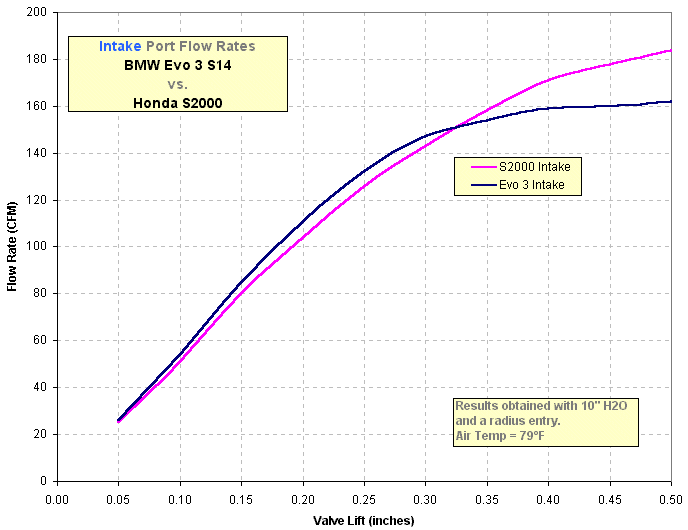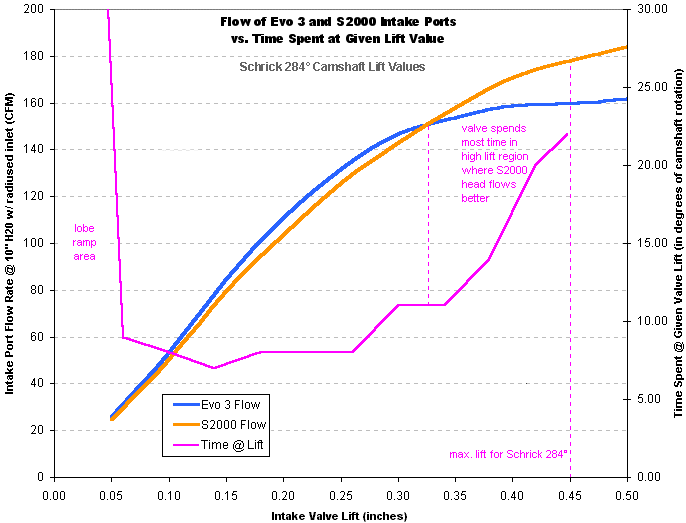
|
|
This chart is interesting. The Honda S2000 cylinder head is very highly regarded among Japanese engine tuners. It is sometimes referred to as the "King of Heads" in those circles. It is easy to see why this is so when you look at the flow results. Consider that the S2000 head has only 36.0 mm intake valves, compared to the 38.5 mm intake valves of the Evo 3 head. And yet the S2000 head greatly outflows the Evo 3 head at valve lifts beyond 0.325" (8.26 mm). But we should not overlook the fact that at lower lifts the Evo 3 cylinder head flows better (though by a smaller margin). So one has to ask which is more important; high-lift flow or mid-lift flow? As the camshaft rotates through 360° the valve lift goes from zero, to max., and back to zero. Perhaps the intake valve spends more time in the "mid-lift" zone, so that flow at mid-lifts contributes more and therefore allows greater cylinder filling? This question is answered by the next chart: |

|
|
Using carefully measured lift vs. cam rotation data for a Schrick 284° cam, it is possible to compare the "time at lift" vs. the flow capability at that lift. Jim Butterworth provides the cam lift data. With this data in hand it is possible to graphically divide this curve into *regions* of lift. Each region of lift is examined to see how long it lasts, in degrees of cam rotation (divide by RPM to get time in seconds). Click here to see how this was performed. By doing this we can address the question of how long the intake valve "dwells" at a certain lift value. If we have
great flow capability at high lifts, but spend very little time in this region, then the high flow numbers
might not seem as important. The chart shows quite the opposite to be the case.
|
|
« Back |